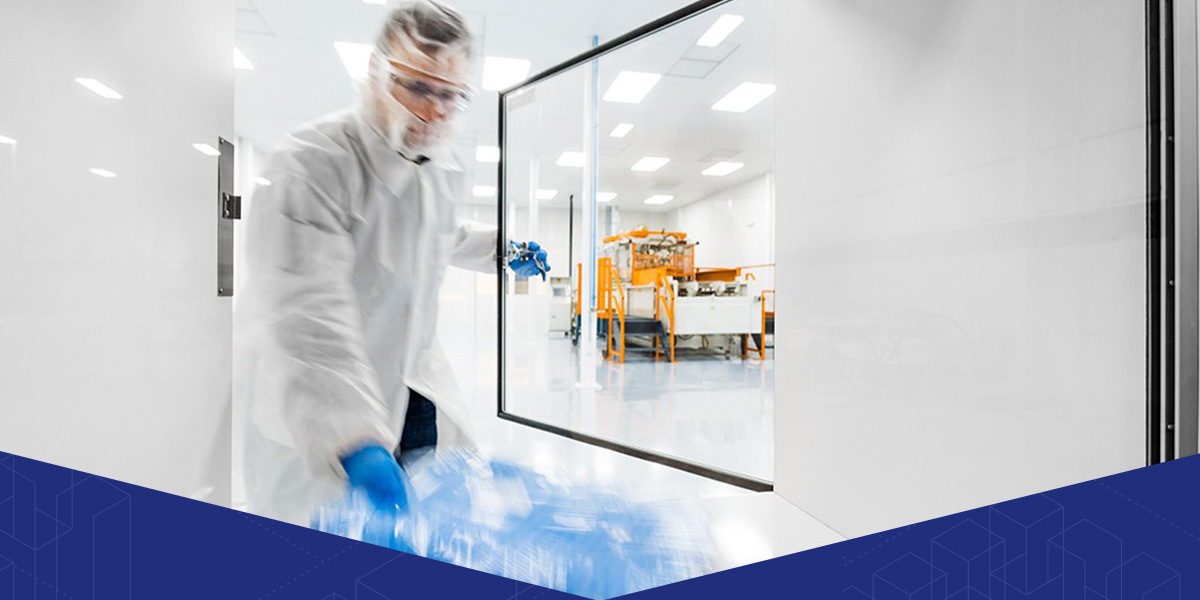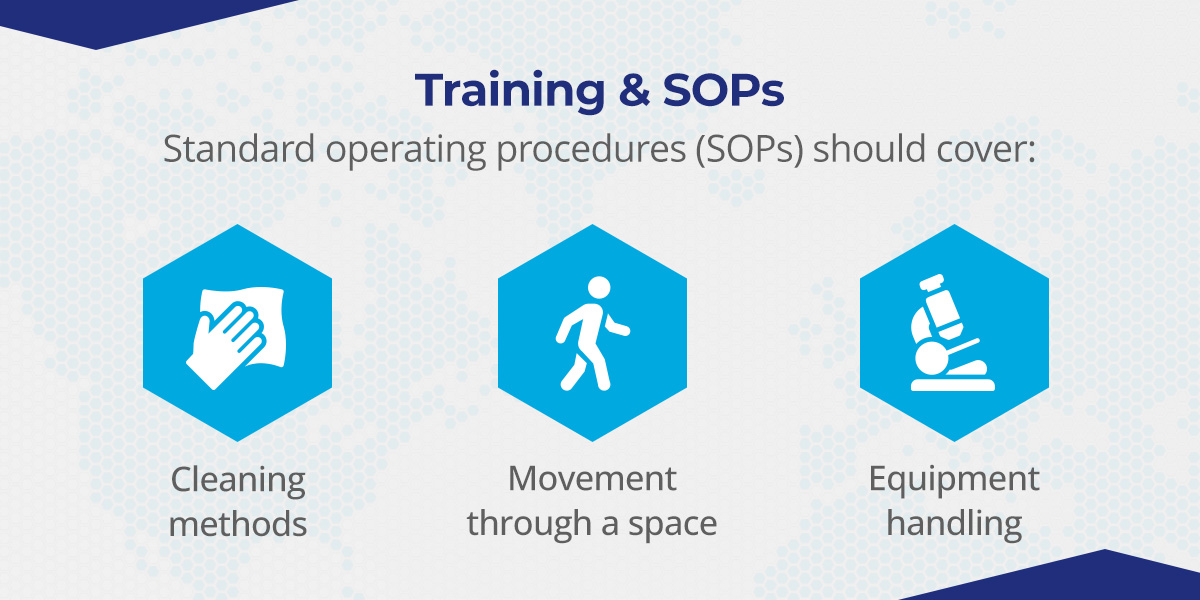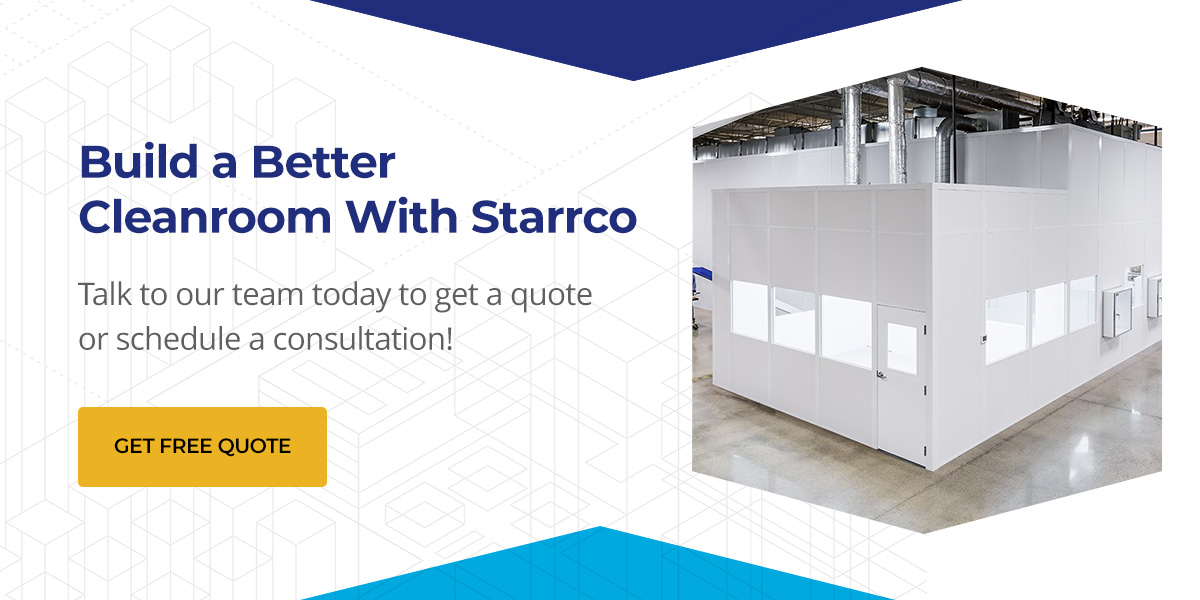


Biopharmaceutical manufacturing involves procuring critical medications and therapies. Any contamination in a vaccine or prescription drug can lead to ineffective or harmful products. Your facility must follow strict regulations to avoid compliance issues and reputational damage.
You can ensure your operation follows all relevant biopharmaceutical cleanroom requirements with the right setup and protocols.
Biopharmaceutical cleanrooms are specialized spaces built to control microbes, contaminants and airborne particles. Vaccines, drugs and cell therapies all play critical roles in public health and safety. The smallest contamination can compromise their quality, leading to unsafe results.
Biopharmaceutical cleanrooms require a higher level of sterility. They need to control particulates and microbes. These conditions require stricter filtration systems, frequent air changes and tight protocols.
Biopharmaceutical workspaces are unique in their:
Requirements for a biopharmaceutical cleanroom go beyond basic wipe-downs. Compliance varies by manufacturing and sales location. Ensure you follow all relevant regulations to avoid fines.
ISO sets the global standard for cleanroom classifications. There’s an allowable particle count per cubic meter of air. Higher-numbered classes allow more particles. This standard also covers air pressure control, testing protocols and filtration.
In the U.S., current good manufacturing practices (cGMPs) are from the Food and Drug Administration (FDA). Cleanrooms need to follow 21 CFR Part 211 standards for personal hygiene, environmental controls, contamination prevention and cleaning validation.
Defined workflows and filtration protect manufacturing integrity. GMP cleanrooms are built and rated to maintain these standards.
Companies manufacturing for sale in Europe must comply with Annex 1. It covers contamination control strategy, continuous monitoring and aseptic processing. Annex 1 aligns with ISO standards but adds specific standards for product protection.
These standards cover sterile compounding and hazardous drug handling for biopharmaceuticals. If your cleanroom is used in hospital settings or compounding pharmacies, it needs to meet these guidelines. They handle segregated areas, pressure differentials and air changes per hour.
Environmental control is crucial for compliance. Everything from the air you breathe to the surfaces you wipe down must be engineered to reduce contamination risks. The following are important environmental controls to consider.
Biopharmaceutical cleanrooms rely on high-efficiency particulate air (HEPA) and ultra-low particulate (ULPA) filters to remove particles from the air. Filters are often paired with laminar airflow systems. This design sweeps contaminants out of the room instead of circulating them.
Facilities should also maintain positive pressure differentials between rooms. Cleaner areas require higher pressure. This makes air flow out of the room, rather than in. Pressure differentials prevent contamination from migrating further into cleanrooms.
Biopharmaceutical products can be sensitive to environmental changes. Temperature and humidity must be kept consistent. Maintain recommended environmental ranges to protect products. Controlled temperatures protect operators and prevent static and microbial growth.
Cleanroom surfaces should also be non-shedding — a material that does not release particles, like carpet. Surfaces need to be smooth and easy to disinfect. If they’re not, contamination can hide in the crevices. It’s common to see stainless steel or epoxy-coated panels. These materials are durable and resist particle collection.
People are the greatest contamination risk for biopharmaceutical facilities. Every operation needs strict protocols for personnel to avoid contamination. Specific protocols for gowning, training and personnel flow protect manufacturing.
The higher your cleanroom classification, the stricter the personnel protocols. At the highest levels, staff must follow multi-step gowning routines.
Gowning rooms must also meet cleanroom standards. Multiple layers of protection and sterile suiting-up spaces prevent contamination at the source.

Staff need thorough training on hygiene and behavior, not just manufacturing. Standard operating procedures (SOPs) should cover cleaning methods, movement through a space and equipment handling. If deviation occurs, staff will need preparation of SOPs for these cases.
Cleanrooms also have strict layout standards. Each space has a unidirectional flow path to keep personnel from crossing through clean and dirty zones.
If workers cross back and forth, they risk introducing contaminants to a sterile area. Structured movement helps maintain compliance and keeps air pressure zoning in play.
Once you know what regulations to follow, you can build a compliant cleanroom. This process means investing in careful planning and validated materials. Even the smallest missstep can lead to compliance issues down the road.
Biopharmaceutical spaces must choose between modular and traditional construction.
Modular cleanrooms offer major advantages for biopharmaceutical manufacturing. They’re more manageable to scale, faster to install and are easier to change with regulations. Components like wall panels, ceilings and pass-throughs are engineered for cleanroom compatibility, reducing setup time. Easily integrate modular cleanrooms with properly rated lighting, ducting and wiring.
Make sure to use zoned layouts for your manufacturing space. Cleanrooms are typically divided into:
Each assembly step needs documentation and validation. Follow installation checklists to construct a space designed for cleanliness and durability. Ensure all airflow testing and pressure balancing are complete before certifying the room.
Designing and installing a cleanroom is only half the work. Your facility must also maintain compliance over time. Biopharmaceutical companies should use environmental monitoring programs to test for particles, microbes and contamination. Along with these, you’ll need to validate and monitor these protocols:
Meeting biopharmaceutical cleanroom requirements is traditionally time-consuming and challenging. At Starrco, we take the stress out of cleanroom construction. Our modular cleanroom systems are engineered for performance. They install faster than traditional builds and offer adaptability as your facility grows.
We go beyond meeting cleanroom regulations and deliver an unmatched customer experience as well. We make the process transparent, efficient and hassle-free. With rapid quotes and expert field support, our installation-ready systems will help you stay compliant. Talk to our team today to get a quote or schedule a consultation!
